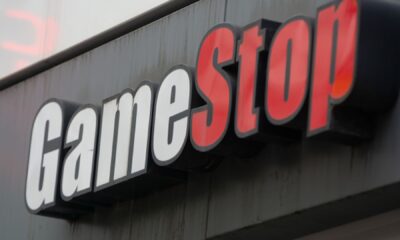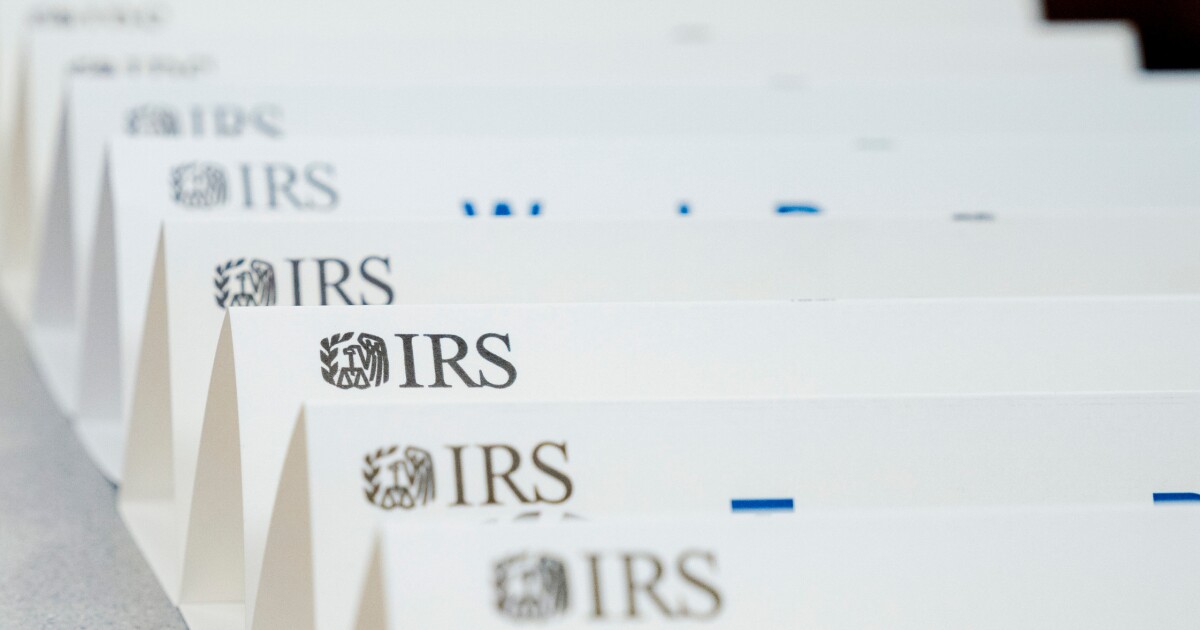President Donald Trump’s much bigger-than-expected tariff hikes increase the urgency of the Republican tax-cut package now in negotiation, while threatening to undermine its boost to business and consumer confidence.
With the biggest selloff on Wall Street since the COVID crisis showcasing investor concerns about Trump’s plans to jack up U.S. tariffs against all trading partners, the stakes are now higher for the GOP tax package. A simple extension of the 2017 income-tax cuts that are set to expire at the end of this year would offer no new fiscal stimulus.
“The main question is what do they do that goes beyond extending the 2017 cuts?” said Alec Phillips, chief U.S. political economist at Goldman Sachs Group Inc. “The tariffs that are being discussed look like they are on a larger scale than the net tax cut that seems to be under consideration in Congress.”
Republicans appear aware of the potential trade-off. Senate GOP members this week unveiled a budget blueprint that provided for $1.5 trillion of extra tax reductions, on top of a $4 trillion extension of the 2017 measures. Treasury Secretary Scott Bessent, one of Trump’s main negotiators, said the administration wants to incorporate Trump’s campaign pledges of ending taxes on tips and overtime pay, added relief for seniors and deductions for purchases of U.S.-made cars. Lawmakers are also aiming to include business-tax breaks viewed among the most pro-growth of the proposals.
The White House chief economist, Stephen Miran, also argued on Friday that the administration’s planned wave of deregulation will have a “powerful, and arguably much more powerful,” effect than tariffs.
But the danger is the ramp-up in import levies tips the economy into a downward spiral that makes it tough for tax cuts, a reduced regulatory burden and even lower interest rates to quickly reverse. Bloomberg Economics estimated that, with the panoply of measures Trump has announced, the average U.S. tariff rate is poised to climb to almost 22%, or the highest in roughly a century.
The tariffs aren’t yet fully in place, and may be subject to negotiation. If they do proceed, most economists see a sizable boost to inflation. Federal Reserve Chair Jerome Powell Friday said the price effects could be temporary, or prove “more persistent.” With wage growth slowing, that implies a hit to household incomes. A consumption hit could in turn spur employers to lay off staff and curb investment — even in an environment of cheaper borrowing costs.
“Large shocks are usually associated with nonlinear effects and unintended consequences,” JPMorgan Chase & Co. economists led by Bruce Kasman wrote in a note to clients Thursday. The bank on Friday changed its call on the economic outlook and now sees the U.S. sliding into a recession this year — an outcome Bessent has rejected.
Then there’s the timing issue. The most powerful wave of tariff hikes yet is set to take effect April 9. But the tax-cut legislation is likely months away from passage. Bessent highlighted in a Bloomberg TV interview Wednesday that the Republicans have never been more united. Even so, the so-called reconciliation bill that Republicans are using to bypass Democrats involves a complicated process, requiring many steps before it’s enacted.
And even then, the tax relief is for next year’s income, while the tariff-related risks are surging in the here-and-now.
“Whatever fiscal oomph that we may get is probably a 2026 reality, whereas the trade policy uncertainty is a headwind to growth is a 2025 reality,” said Richard Clarida, managing director and global economic adviser at Pacific Investment Management Co. and a former Treasury official in the George W. Bush administration. “In the narrow, limiting case, where you don’t do anything on tax on tips or this or that, then there’s essentially no real net stimulus.”
Bessent has repeatedly emphasized that the Trump administration’s priority is Main Street, not Wall Street, and he and the president have embraced the idea of a transition period to where the economy is propelled by the private-sector — rather than the government-led growth pattern they say prevailed under Joe Biden. High import levies could also offer a path toward better trade deals.
“Is this ugly right now? Is this distasteful? Absolutely,” said Phil Orlando, chief market strategist at the asset manager Federated Hermes. “But it was exactly the sort of thing they needed to do in order to get everyone’s attention and start to have a series of negotiations to try to level that playing field and boost economic growth through more normalized trade.”
The tariffs in the meantime will be bringing in fresh revenue to the government, which — while it cannot count toward paying for the tax cuts according to reconciliation-bill rules — may help reduce the outsize federal budget deficit. Bessent has estimated the tariff income at $300 billion to $600 billion a year.
A political risk for the Republicans, beyond any potential recession, is that import duties are regressive — disproportionately affecting lower-income buyers of overseas goods. That risks the working-class voters that helped the GOP secure both the White House and both chambers of Congress in November.
The Tax Foundation, a policy think tank, has estimated the announced tariffs will impose an average tax hike of over $1,900 per household for 2025. By comparison, Senate Majority Leader John Thune said a four-person household with $80,000 in earnings would avoid sending an additional $1,700 to the government next year thanks to the tax package.
The tariffs are “highly damaging and primarily burden low and middle income families,” said Samantha Jacoby, deputy director of federal tax policy at the Center on Budget and Policy Priorities. “Small targeted tax cuts for low income or middle income families doesn’t change that.”


 Economics1 week ago
Economics1 week ago
 Economics6 days ago
Economics6 days ago
 Personal Finance6 days ago
Personal Finance6 days ago
 Accounting7 days ago
Accounting7 days ago
 Blog Post3 days ago
Blog Post3 days ago
 Personal Finance1 week ago
Personal Finance1 week ago
 Economics1 week ago
Economics1 week ago
 Finance6 days ago
Finance6 days ago











